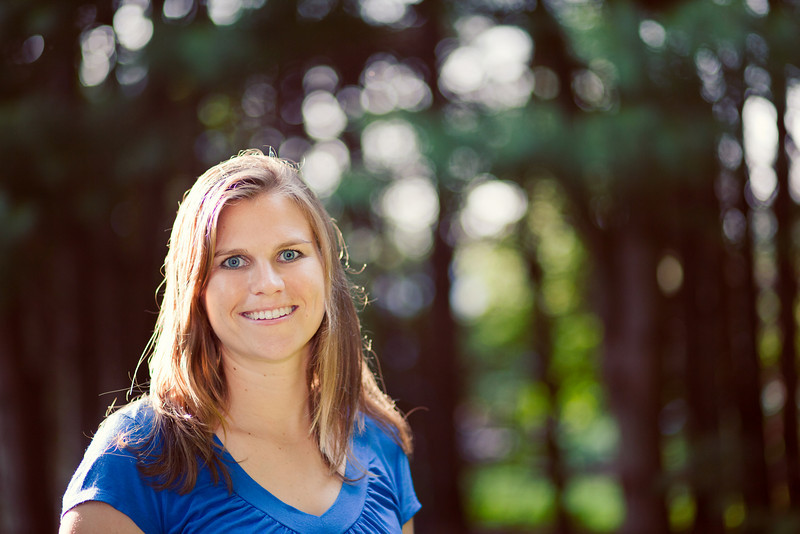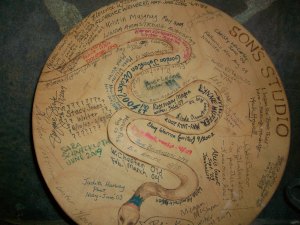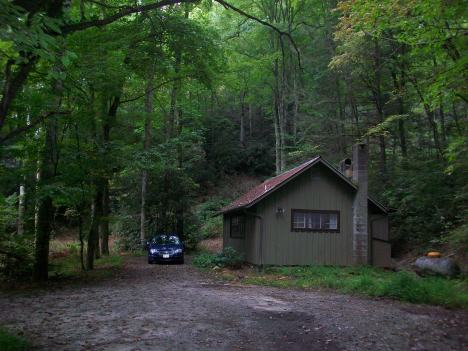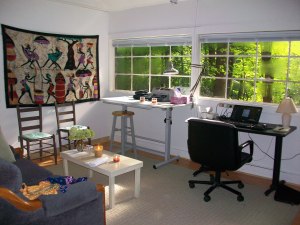I recently discovered a fabulous blog, Mira’s List, which helps writers, artists and other creative thinkers find grants, fellowships, residencies and more resources. Who’s the woman, I wondered, who compiled this valuable information for free and shared it with everyone lucky enough to stumble across her site?

Mira Bartok, of Mira's List
Turns out she’s quite the interesting character. Mira Bartok has published her writing in anthologies and literary journals and is the author of more than 30 children’s books on world cultures. She recently sold her first full-length book for adults, an illustrated memoir entitled The Memory Palace. She’s also a visual artist who exhibits her work at museums and galleries throughout the United States and abroad, and she serves as a spokesperson for A Room of Her Own Foundation, a foundation for women writers.
I considered simply linking to Mira’s List and leaving it at that — her blog alone is a wealth of information. But then Mira agreed to an interview. So continue reading below, and you’ll learn not only more about what makes this artist tick, but also a few of the gems for writers she has come across in her research.
Thanks for joining us, Mira! It sounds like you’re a jack of many trades. What’s your day job?
The short answer is that I don’t have a day job. Over the last ten years I’ve been recovering from a traumatic brain injury (TBI), a result of a bad car accident, and after trying to teach part-time and do a variety of freelance writing that I used to do before the TBI, I ended up having to go on disability. About five years ago I won a lawsuit from the accident and that, plus some grants, thankfully provided me with enough to live on until now.
Fortunately, I just sold my book to Simon & Schuster! That should get me through the next two to three years if I’m careful. But I’m one of the millions out there without a pension plan, an IRA or 401 K, etc. etc. When I was younger, in my twenties and thirties, I made a living as a cultural specialist and educator in museums, and also taught the occasional university class. I also spent several years writing a children’s book series on different cultures to pay the bills. Oddly enough, I’ve made most of my living from either doing art or writing.
Why did you start Mira’s List?
I began Mira’s List as a blog late in the winter of 2009. But I had been sending announcements out to a list of people, about a hundred of them, for a year or so before that. What started as my nagging about ten good friends to apply for things turned into a longer list of their friends and their friends’ friends and eventually, I thought I would serve people better if the whole thing became a public forum. I believe in championing people and helping others to succeed and become more resourceful. I was helped a lot by various institutions during my recovery period so it is my little way of giving back.
What are a few of your favorite grants and fellowships for writers?
Wow. That’s hard to say. If we are talking about the Big Ones, then of course, getting a Guggenheim, a Radcliffe or an NEA would be high on the list! But there are also those smaller grants, the ones that are rather particular to certain kinds of people or art forms that don’t usually get much attention. The Xeric Foundation gives grants to comic book writers/artists and as far as I know, it might be the only institution of its kind. Oh, Creative Capital is fantastic. They do all kinds of things and are totally open to New Media and experimental work from all genres. Some people call it the gift that keeps on giving.
Another place that is great is the Haven Foundation, which was started by the writer Stephen King after, oddly enough, recovering from his own TBI. They give up to $25,000 a year for four years in a row to writers and others in the arts who have suffered an illness or some kind of financial disaster. I wish they were around when I was looking for help in 1999! Anyway, there are many, many little gems out there, and I hope they survive these hard times.
You’re an encyclopedia of knowledge! What about residencies for writers?
You know, when people are starting out looking for residencies, they first hear of MacDowell and Yaddo and think, gee, I’ll never get into those. I haven’t even published a book yet. Well, those places are amazing but there are also dozens of places all over the world that are interested in not only established writers and artists but emerging ones as well. And I have seen some really interesting environmental residencies popping up every year. Where people go and not only do their work but also collaborate with other artists on an environmental theme, or they do some kind of community project. Sitka Center for Art and Ecology is one environmental residency I’ve heard great things about. There are also some very intriguing cross-genre residencies, like the Binaural Residency Program in Portugal, which brings together sound artists, writers, musicians and others to create new media sound projects.
Continue reading →
Filed under: Grants & Fellowships, Interviews, Memoir, Resources, Writers' colonies | Tagged: artist, fellowships, grants, Memoir, Mira's List | 7 Comments »
















